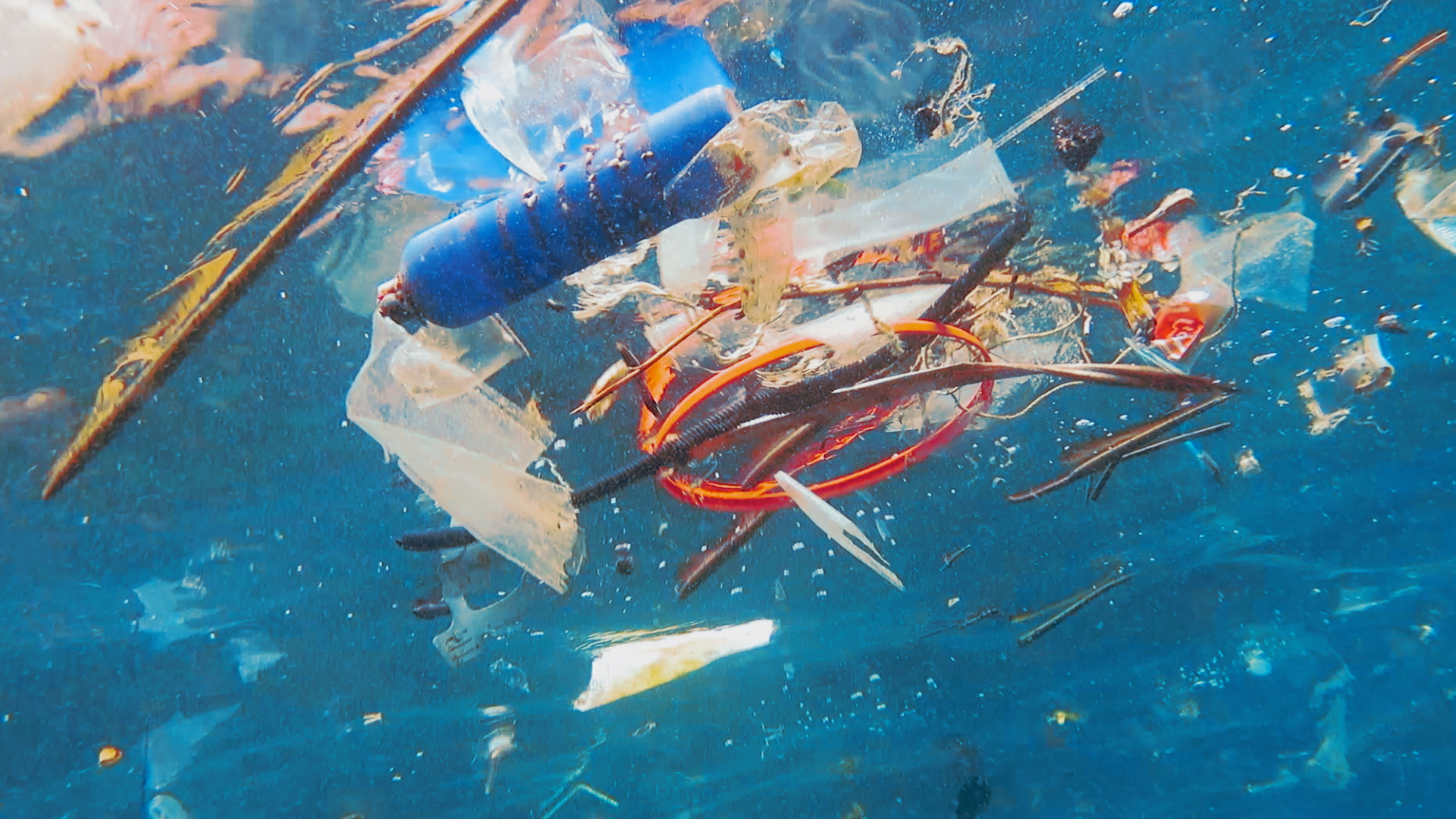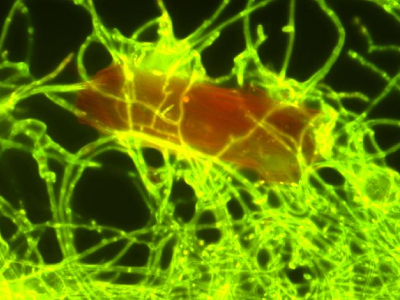
[JACK AYLMER]
A NEWLY DISCOVERED MARINE FUNGUS CHANGES THE TIDE IN THE BATTLE AGAINST PLASTIC WASTE. EVERY YEAR MORE THAN 880-BILLION POUNDS OF PLASTIC IS PRODUCED. MUCH OF THIS PLASTIC ENDS UP IN THE OCEANS, POSING A THREAT TO MARINE ECOSYSTEMS.
A TEAM FROM THE ROYAL NETHERLANDS INSTITUTE FOR SEA RESEARCH DISCOVERED A SEA FUNGUS CAPABLE OF BREAKING DOWN POLY–ETH-UH-LEAN, A COMMON PLASTIC FOUND IN OCEAN LITTER.
THE FUNGUS “PAREN–GIO–DONTIUM ALBUM” LIVES AMONG THE MARINE LITTER AND IS ONE OF ONLY FOUR KNOWN SPECIES OF PLASTIC-EATING MARINE FUNGI.
SUNLIGHT PLAYS A CRUCIAL ROLE IN THIS PROCESS. THE FUNGUS ONLY BREAKS DOWN PLASTIC THAT HAS FLOATED NEAR THE OCEAN’S SURFACE AND BEEN EXPOSED TO THE SUN’S UV RAYS., UV’S CAN MECHANICALLY BREAK DOWN PLASTICS aiding FUNGI IN BIOLOGICALLY DECOMPOSING THEM.
THE FUNGUS BREAKS DOWN POLY–ETH-UH-LEAN PLASTIC AT A RATE OF ABOUT 0.05-percent PER DAY. INTERESTINGLY, IT DOESN’T UTILIZE MUCH OF THE PLASTIC’S CARBON. INSTEAD, IT PRIMARILY CONVERTS THE PLASTIC INTO CARBON DIOXIDE. ALTHOUGH CARBON DIOXIDE IS A GREENHOUSE GAS, THE AMOUNT EMITTED BY THIS FUNGUS DURING THE PLASTIC DEGRADATION PROCESS IS MINIMAL – SIMILAR TO THE LEVELS HUMANS EMIT WHEN BREATHING.
DESPITE THESE FINDINGS — MANY PLASTICS THAT SINK TO DEEPER OCEAN LAYERS WITHOUT SUN EXPOSURE REMAIN INTACT. LEAD RESEARCHER ANNIKA VAKSMAA FROM the NIOZ BELIEVES THERE ARE OTHER — YET-TO-BE-DISCOVERED FUNGI IN THESE DEEP REACHES THAT COULD DEGRADE PLASTIC.
THE RACE TO DISCOVER ORGANISMS THAT CAN BREAK DOWN PLASTIC IS BECOMING MORE CRITICAL AS PLASTIC PRODUCTION IS EXPECTED TO TRIPLE BY 2060.
HOWEVER, THE QUEST TO FIND NATURE’S SOLUTION TO PLASTIC POLLUTION ISN’T NEW.
IN 2001 — A TEAM OF JAPANESE SCIENTISTS MADE A GROUNDBREAKING DISCOVERY AT A LANDFILL: A SLIMY FILM OF BACTERIA WAS THRIVING ON A DIET OF PLASTIC BOTTLES AND TOYS. THESE BACTERIA WERE BREAKING DOWN THE PLASTIC AND USING THE CARBON WITHIN TO FUEL THEIR GROWTH AND REPRODUCTION.
IN 2011, A FUNGUS WAS UNEARTHED IN THE AMAZON RAINFOREST THAT CAN BREAK DOWN PLASTIC POLYMERS. WHAT’S EVEN MORE REMARKABLE IS ITS ABILITY TO SURVIVE AND THRIVE IN BOTH ENVIRONMENTS WITH OXYGEN –LIKE THE FOREST FLOOR – AND ENVIRONMENTS WITHOUT OXYGEN – LIKE DEEP WITHIN LANDFILLS.
RESEARCHERS SAY THIS ADAPTABILITY MAKES IT AN IDEAL CANDIDATE FOR TACKLING PLASTIC POLLUTION FROM TRASH HEAPS TO UNDERWATER WASTE.
I’M JACK AYLMER
FOR MORE STORIES LIKE THIS —
DOWNLOAD THE STRAIGHT ARROW NEWS APP OR VISIT US AT SAN.COM










